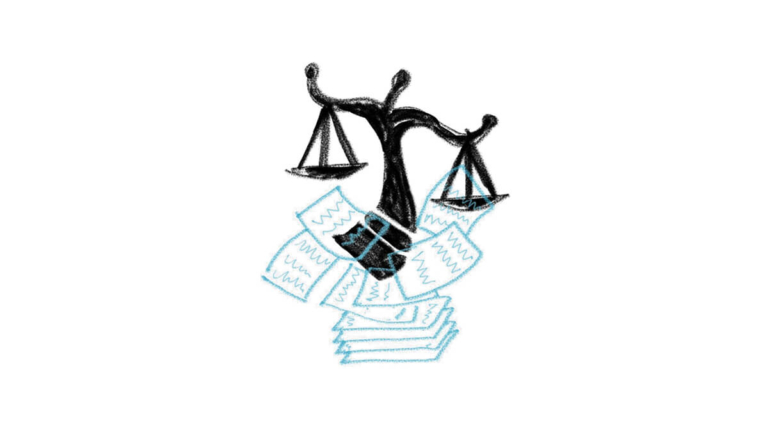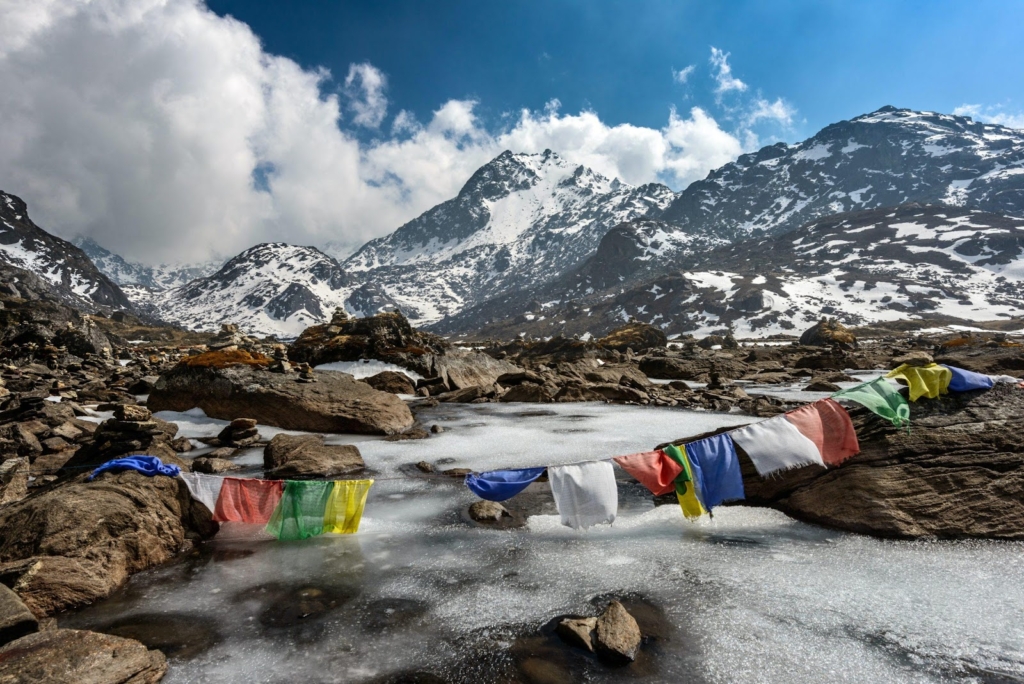Casebook Info
Seeking adequate climate action and the protection of fundamental rights, public interest lawyer Padam Bahadur Shrestha took matters into his own hands when he asked Nepal’s Supreme Court to order the passage and implementation of improved climate legislation. In a victory for Nepalese citizens and ecosystems, the Court mandated that Nepal’s government take immediate action to fulfill its constitutional and international climate obligations.
- Year Filed 2017
- Year of Most Recent Ruling 2018
- Year of Final Ruling 2018
- Jurisdiction Nepal
- Court Name Supreme Court of Nepal
- Primary Focus Mitigation & adaptation
- Ruling On Merits
- Plaintiff(s) Environmental lawyer Padam Bahadur Shrestha
- Respondent(s) Individual (environmental lawyer Padam Bahadur Shrestha)
- Outcome N/A
- Organizational leader of the litigation N/A
- Link to the decision/ruling
Background
In Nepal, the impacts of climate change have proven more immediate and far-reaching than in most other countries. Indeed, although Nepal only contributes ~ 0.027% of global greenhouse gas emissions, this small and Himalaya-bound country of only 30 million inhabitants is the 4th most climate-vulnerable country in the world (according to the World Bank). In recent years, global warming has led to an increased risk of landslides, monsoons, heat stress, glacial lake overflow, and a host of catastrophic weather events. The country experienced the Seti flood of 2012, the Jure landslide of 2014, the Gorkha earthquake of 2015, and the 2021 landslides in Melamchi Sindhupalchowk which led to five deaths and disrupted Kathmandu’s water supply. Despite this, Nepal’s outdated climate policies and action plans, as of 2017, had only been implemented in a scattering of municipalities.
In August 2017, Nepali citizen Padam Bahadur Shrestha – himself an environmental public interest lawyer – filed a complaint requesting that the government of Nepal enact a new climate change law. When the authorities failed to respond, Shrestha petitioned the Supreme Court to issue a writ of mandamus or to otherwise mandate that the government enact such a law, “to protect the interests of all [] animals, flora, fauna, and biodiversity” (Judgment, at 2).
The petitioner alleged that Nepal’s legislation, the Environmental Protection Act (“EPA”) of 1997, was inadequate because it failed to address climate change and did not include provisions for adaptation, mitigation, or the allocation of liabilities for climate change impacts. He also asserted that Nepal’s Climate Change Policy of 2011 had not been implemented and that, as a result, the citizens and ecosystems of Nepal had experienced severe climate change impacts.
The government’s failure to sufficiently address climate change, the petitioner argued, had violated citizens’ fundamental rights under the Constitution of Nepal. The alleged violations included infringements on the rights to a dignified life, to a clean and healthy environment, to access basic healthcare services, and to food and protection from starvation (Articles 16, 30, 35, and 36 of the Constitution). Moreover, the petition alleged that the government’s failure to act also contravened Nepal’s international commitments under the United Nations Framework Convention on Climate Change (1992), the Kyoto Protocol (1997), and the Paris Agreement.
On these grounds, the petitioner argued that Nepal’s government needed to immediately enact a new climate change law – one that accounted for the 1997 EPA’s critical gaps by providing for climate change mitigation and adaptation measures. Among its other requested remedies, the petition also requested that the Court order Nepal’s government to “renounce the sluggish attitude and plans and policies” outlined in previous legislative attempts (Judgment, at 5).
The Supreme Court’s 2018 Decision –
In 2018, Nepal’s Supreme Court vindicated the rights of the petitioner and all Nepali citizens. Agreeing with the petitioner, the Court confirmed that climate mitigation and adaptation directly concern fundamental rights. The court held that
- the petitioner’s constitutional rights to a dignified life (Article 16) and to a clean and healthy environment (Article 30) were impaired by climate change and the government’s inadequate action;
- the government was obligated under Article 51(g) of the Constitution to protect the environment; and,
- the government needed to take immediate action to ensure sustainable development and climate justice, including intergenerational climate equity.
The Court mandated an amendment to existing laws and the introduction of a new, consolidated law – in addition to issuing detailed instructions on what the new law needed to contain. The Court reasoned that Nepal’s commitments under the Paris Agreement obligated the government to take domestic action.
In its writ of mandamus, the Court instructed Nepal’s government to pass and implement a new climate change law. The Court ordered the government to: (i) mitigate and adapt to the effects of climate change; (ii) reduce fossil fuel consumption and promote low carbon technologies; (iii) minimize the adverse effects caused by climate change in vulnerable areas; (iv) make legal arrangements to ensure ecological justice and environmental justice for future generations; and (v) develop scientific and legal instruments to compensate those harmed by pollution and environmental degradation.
Having found that Nepal’s 1997 EPA was inadequate, the Court also ordered the government to immediately implement Nepal’s existing Climate Change Policy (2011) until the new law was passed and enacted. The government was also expected, in line with implementation of the 2011 Policy, to realize the National Adaptation Programme of Action (2010) and its corresponding Framework on Local Adaptation Plans (2011).
- 80% of all rivers and streams are fed by glaciers that are retreating.
- 9ºC Nepal’s expected temperature increase between 2016 and 2045, under a medium-range emissions pathway.
- 350,000 the projected number of Nepalese citizens who will be affected by increased flooding in 2030 (nearly doubling 2010’s figure of 157,000).
- 0.027% Nepal’s approximate contribution to global greenhouse gas emissions.
Strategies
Centering rights

The petitioner’s invocation of Nepalese citizens’ fundamental rights – to a dignified life and a healthy environment, among others – served as the central basis for his climate-related claim. Plaintiffs are increasingly turning to their state constitutions and guaranteed rights in their push for sufficient climate action. And, increasingly, courts are listening. Nepal’s Supreme Court agreed that climate mitigation and adaptation bear directly on a host of constitutionally guaranteed fundamental rights, including the right to a dignified life and the right to a clean and healthy environment. The court further held that the state has a constitutional duty to actively protect these rights. The petitioner’s international law claims strengthened this argument, but his rights-based claims grounded the case and allowed him to petition the Supreme Court directly.
Take-aways
No individual or country is too small to make a difference. In the context of global warming and climate litigation, it’s sometimes difficult to remember that positive human action – just like, for instance, carbon emissions – can generate cascading impacts far greater than their original stimulus. Shrestha v. Prime Minister demonstrates just how much impact one lone plaintiff can have on the environmental health and action of an entire country and serves as a powerful reminder that initiative and hope can move us in the right direction.
Impacts
Following the Supreme Court’s order, Nepal’s government passed the new Environment Protection Act (2019) and Forests Act (2019), both of which aim to address the urgent need for climate mitigation and adaptation measures. The 2019 EPA charges national and local authorities with adopting adaptation plans (Article 24) and requires the state to identify sectors for greenhouse gas mitigation, set national targets, and create an Environmental Protection Fund responsible for environmental protection, pollution prevention, and protection of national heritage (Articles 25 and 31).
The Court’s favorable ruling also contributes to a robust and increasingly critical line of precedents in the South Asia region, where the impacts of climate change are manifesting more rapidly and deleteriously than almost anywhere else in the world. Notably, Nepal’s court chose to emphasize the country’s vulnerability to climate change rather than Nepal’s historically negligible contribution to global climate change. Even though Nepal’s emissions barely dent the global total, the Court still saw fit to order immediate mitigation action. In doing so, the Court implicitly refuted the often-belabored argument that individual countries can do little on their own to diminish global warming, setting an example for high-emitting countries.

